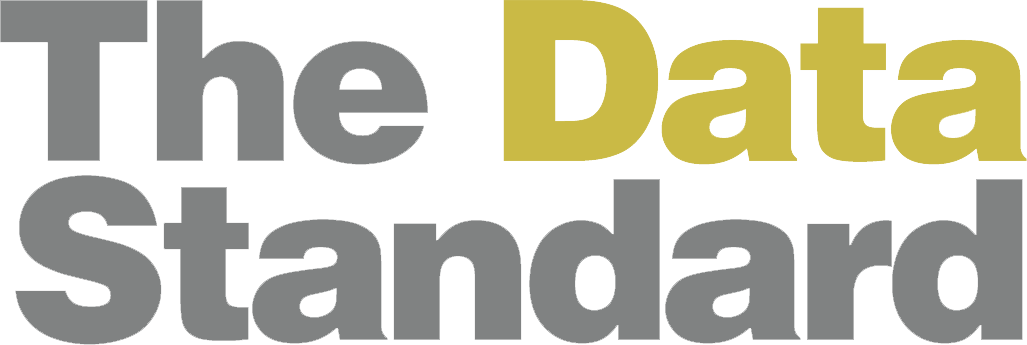
A picture may paint a thousand words, but it also has plenty of data points. It’s the job of Christina Gibbs to manage that data for the Detroit Institute of Arts. After participating in our first Datalogue on Zoom in April, she joined us at The Data Standard for a conversation to talk about the intersection of data and art, and how the museum world has some room to grow when it comes to data science.
Thanks for sitting down with us, tell us a bit about you.
I manage the collections database that houses all the artwork data and support integrations with other in-house applications and our online collection. My database is the authority for knowledge about the collection; the object records, provenance of the objects, all the history, the metadata, and images of the collection (fed by the integration with our Digital Asset Management System). And then we also have exhibition, shipping, and art loan records — everything is linked and forms the foundation that support the stories that artwork and its movement across the globe can tell. It’s one big relational and transactional database.
How did you find your way into this role?
Funny, I actually have a degree in fine arts with a concentration in making sculpture. I was originally hired as a museum technician during our big reinstallation and grand reopening for 2007. We were tasked with de-installing the entire museum and reinstalling the collection which included all new casework, parts and didactics. All these parts and shipments and missing parts was a mess so I created some crazy spreadsheets to track everything. The registrars picked up on that skill and pulled me over into their department. Then my boss asked, oh, hey, in your spare time, can you manage the database? Or is this something you’d like to learn how to do? I said, sure. At that point, thirteen years ago, we didn’t have a full-time database manager. With many forces in play and perhaps a little magic we finally gained institutional support for access to the collections and a new department was formed. We finally acquired a DAM, a DAM manager and collections information specialists who clean up, index and standardize our records.
What are the big problems you’re trying to solve now?
With COVID, our staff doesn’t have access to the physical collection. Neither do our visitors. Our museum was not set up to work remotely with such heavy focus on interactions with the physical objects and spaces. We have a lot of on-prem databases, so I’m dialing in now through a VPN connection. That was big problem number one. The next one is: How do we transform our very much in-person, physical experience into a similar digital experience that is equally rewarding for our visitors? Our mission statement is to create experiences that help each visitor find personal meaning in art, individually and with each other — how do we encourage that outside the museum walls? I would be remiss to not acknowledge that here in Detroit there are severe equity issues. I looked at census data from 2018: only 60% of households have an internet connection and libraries and schools are closed. So, while the museum industry is working so hard to become more inclusive, diverse, accessible and equitable, then all the sudden, boom, our museum is now excluding 40% of our population in the city of Detroit, at least digitally and not by choice.
What’s your biggest data challenge right now?
We have almost 90,000 object records in the database, but I’m faced with incomplete, non-substantive data. Cataloging has not moved online as quickly as it should have. Yes, every object is accounted for and has a record. But how complete is that record? I recently looked over our collecting habits by gender over time. There was a spike somehow in 1983. That year, 96% of the works we collected were by women-identifying artists. No other year broke the 50% line. However, not all of the artists have been tagged with a gender yet. So, there’s this big gray area and room to grow but issues with data quality and accuracy is a struggle to paint a full picture.
What third-party datasets are you working with?
We primarily work with Getty Vocabularies, such as the Art & Architecture Thesaurus (AAT) and the Union List of Artist Names (ULAN). I was able to use Open Refine to query Wikidata by linking on ULAN ID’s and batch assigned a large set of gender terms to artist records in our database. Speaking of Wikidata, we planned to publish our data and images on wiki platforms as part of a grant that predated COVID, but that part of the grant was pushed back. Now we are going to go ahead, jump forward and do a pilot release of a specific, manageable collection. Publishing to Wikidata will make our collection even more accessible and visible because people go to Wikipedia way more often than our website to find artwork. When putting our objects and images into Wikidata and Wikimedia Commons, they are immediately immersed in a global context — with other museum’s collections, history, music and more. Also, data is published under a free license. Anyone can use, reuse and remix our data. Data science students could go use our collection and develop whatever they desire. The opportunities are endless with open linked data. Not to mention all the built-in data analytic tools that are available in the Wikidata community.
How is the whole museum world leveraging data?
I think we are scrambling to figure that out. I think the museum sector in general is lacking sufficient tools to gather data that we can then turn around and analyze comprehensively, especially on visitor data and visitor engagement data. For example, an image is downloaded from the DAM and we know the date of downloaded — maybe we know the purpose of the download — to share on social media — but then we have no way to follow that image on social media and track the return on value from that asset.
Or, take visitor data. A lot of museums are still using clickers to count people. We installed some sensors at the DIA to track visitors more electronically, but then there’s the problem of not knowing whether someone just came in and had lunch and left and didn’t go to a gallery, or maybe they did go to a gallery, but which one, how long did they spend there? So how do we profile our visitors? What are they looking for? What brings them back to the museum?
Our systems are very siloed. I know a lot of museums, I believe, are implementing Salesforce. But then we have a different database for our donors who give monetary donations and artwork, and gifts of art are entered separately in my database. None of that is integrated. I can’t get my hands on cross-platform data if I wanted to — if it exists in the first place.
I do not know of any museums that currently has a data scientist position on staff. Just recently, maybe the past few of years, museums are hiring data analysts and that’s exciting.
What does the data team look like in your organization?
We don’t have a quote-unquote, data team. We have a traditional IT department. We do have a small but talented evaluation department, but I think they might also be lacking sophisticated tools for gathering in-depth data. They do conduct visitor engagement surveys, but it may be on paper or through email communication. Our new “pop-up” digital engagement team during the pandemic is asking really good questions and we are beginning to look deeper into Google Analytics on our website but we still have a ways to go.
And meanwhile, you’re the one with the art degree who’s got the view on data.
Yes. I’ve met other people who have transitioned from art into data. I think artists have the kind of mindset that looks at data differently.
What do you mean?
We can easily identify patterns in data — really quickly. Sometimes, I’ll solve problems before IT or vendor support does. I think it’s because I can pick out these patterns, even if we’re just looking at a big grid of rows and columns. I tend to think in the big-picture — how one change here could affect something over here and something way over there too. I get the feeling that a lot of data scientists might think this way too. It’s sort of linear thinking versus cyclical thinking, being able to grasp big sets of data and identify loopholes.
People ask me if I miss making art. I tell them that I do not. I’m still applying that same skill set to data management.




